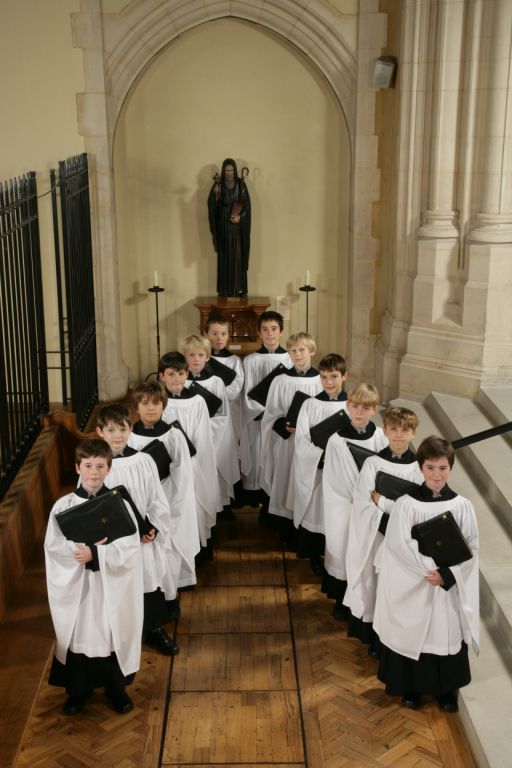The modern Gothic Ealing Abbey has a fine acoustic for its choir of 15 choristers and six Lay Clerks (2 countertenors, 2 tenors and 2 basses).
Like many Choir Directors, Christopher Eastwood is primarily an organist. Before he came to Ealing Abbey in 2006 he had been Organ Scholar at Lincoln College, Oxford and at Westminster Cathedral from 2004-2006 under Martin Baker. Christopher explains how he manages to keep an eye on the organ and an ear open for the voices: “I came to Ealing Abbey choir as an organist but my love for singing is as great. While at Westminster I was often very keen to jump over the organ console and join in with the Lay Clerks! I miss singing a great deal and would love to be involved if time allowed.”
Christopher chooses the music for each term: “There is always an element of personal choice and I am always looking to include new music into the repertoire. This has to be balanced with the need to prepare music for concerts, recordings, Easter/Christmas, as well as devoting time to the training of the boys' voices. We continue to build on the wealth of polyphonic repertoire that is available, too.”
The choir was founded c.1910 by a monk of the Abbey, Dom Cyril Rylance, and some distinguished musicians have sung in it, including Michael McCarthy (Washington National Cathedral), Jonathan Brown, and Andrew Carwood (St Paul's Cathedral).
The choristers rehearse 3 mornings a week and on Sunday before Mass. They also sing Mass on Tuesday evening at 6pm. The choir sings for Advent Vespers (1st Sunday of Advent, 5pm) and for all the main Christmas and Easter services. They sing from the part of the Abbey that was added around the turn of the millennium, having moved from their previous place near the Rushworth & Draper organ. There is a note of regret in Christopher’s voice as his eye turns to the beautiful instrument: “Sadly the distance is too great for this to be an option”.
But how does the choir continue to maintain standards? Christopher explains: “The most important thing is to excite and stimulate the choir with repertoire that is new to them and new approaches to existing repertoire. It is also important not to undervalue the effect a choir has on its congregation/audience, which can be so powerful. I work a lot with the singing teacher on technique, to ensure that the choristers have a sound base to work from; one which allows them to approach a wide range of repertoire.”
The choir has recently toured Rome (2008), Strasbourg (2010) and USA (2011), with tours planned to Poland (2013) and Australia (2015). A CD was recently released on the Herald label – ‘Membra Jesu Nostri’ by Dietrich Buxtehude.




